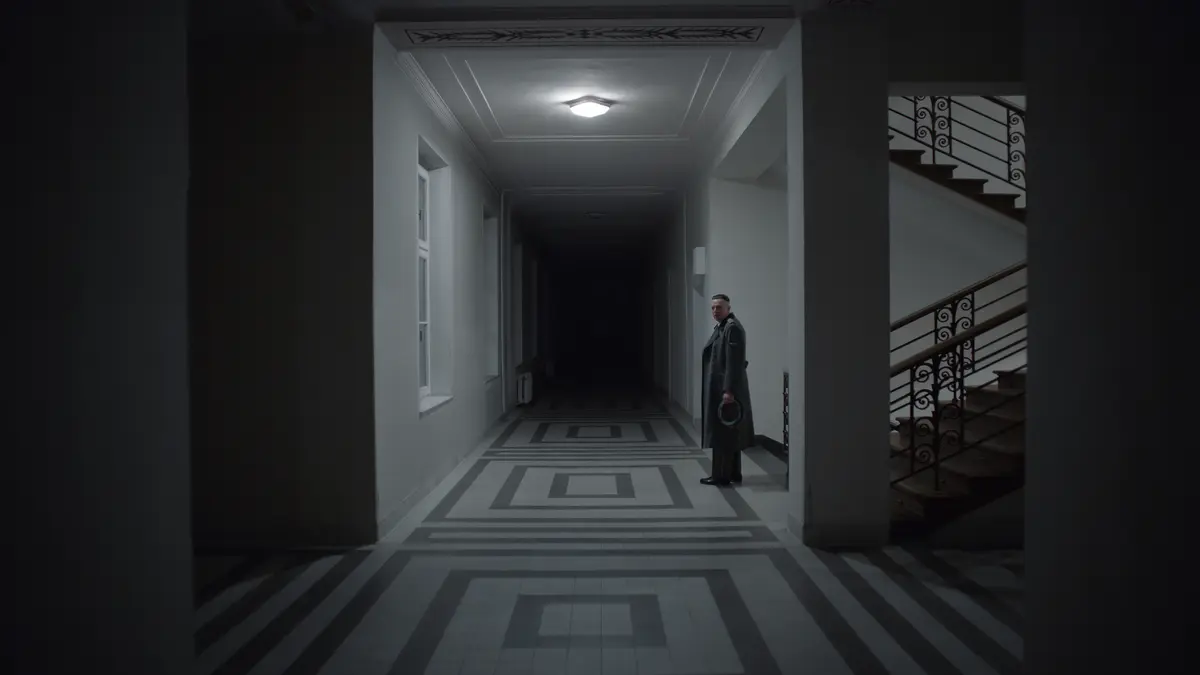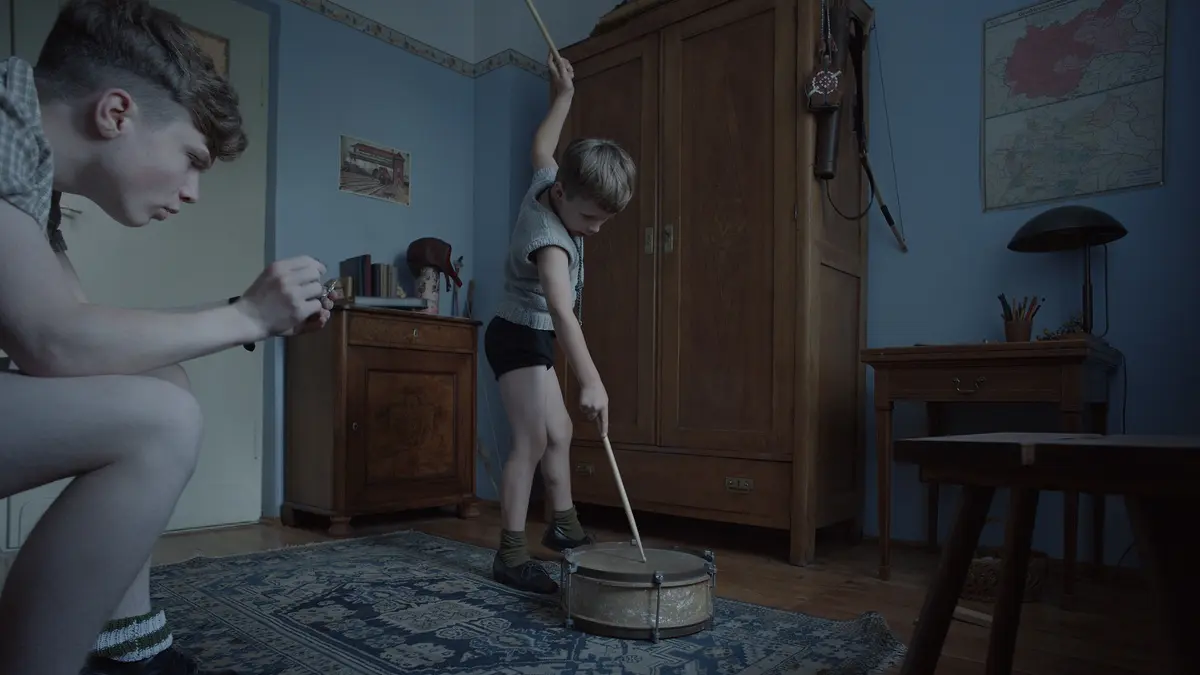The Zone of Interest's Oscar-nominated creative team on their 20 year collaborative partnership with writer-director Jonathan Glazer:
Johnnie Burn (Sound Designer)
Dear Film lovers,
My teenage bedroom was a sound sanctuary, cluttered with, speakers, samplers & DJ equipment, but I never thought you got paid for that stuff. I had more dreams in that equipment than in the bed. A summer job at a recording studio cracked open my eyes, and before I knew it, I helped Jonathan Glazer on a video for UNKLE's "Rabbit in The Headlights." We then had a decade of adventures leading us to Under The Skin, where we understood how we really liked to use sound in film.
Working with Jon has been an unparalleled masterclass in film. I believe he has a profound effect upon everyone with whom he works. His ingenuity and dedication to the art form have not only shaped my career but also paved the way for collaborations with visionary directors like Yorgos Lanthimos & Jordan Peele, in fact most people mention Skin in the first five minutes.
Our latest venture, The Zone of Interest, has been an intense journey into a past that must never be forgotten. Crafting the sound for this film posed a profound question: How do we authentically recreate the sound of the Holocaust and in that how to also honour its memory with the utmost respect? It was a challenge we met with both reverence and a commitment to truth. Months of research in Auschwitz archives and months of trial and error creating sound before we even began putting any sound to film. Jon's artistic genius lies in his meticulous care for every detail, his films a decade in the making, not out of necessity, but out of a devotion to his exploration and craft. For his cast & crew in our myriad roles and with every tool at our disposal, it always seems to me our collective mission is simply: to evoke a genuine visceral feeling in the viewer and then remove any fluff. With The Zone of Interest, this emotion is not just palpable but necessary. It's a film that demands to be felt, and more importantly, to be reflected upon collectively, in a theatre, surrounded by others.
So I invite you to join us, be part of a shared experience, The Zone of Interest is waiting to speak to you.
See you at the movies.

Paul Watts (Editor)
Jon and I have been working together for twenty years now and his remit has always been simple: “Get the right shots in the right order at the right length.” In essence, that is the job. In reality, it is a little more complicated as the cutting room is a place where writing happens as much as editing as we navigate the journey from potential to reality. Our challenge is not simply to fulfill the script, but to take the rushes and examine them, and respond to them, regardless of preconception. That’s where the fun lies.
Every project has its own challenges but the broad approach remains constant. Everything is examined; we’re essentially cracking a code by discovering what does and doesn’t work, turning everything over and checking every opportunity, constantly keeping a watchful eye out for the unexpected.
The Zone of Interest, with its multi camera approach opened up myriad possibilities in the cutting room. Rather than the traditional approach of filming wides, mids, close ups, etc., entire events were captured across up to ten cameras simultaneously which we were then able to unpack, scrutinize, and articulate in every conceivable way, to realize the form that was required. I’ve never had that level of calibration control before throughout an entire film, with such a consistency of language across everything.
The collaborative process between edit, VFX, sound design and music is something that we have developed over many projects over many years. We don’t lock the edit to pass it along to the rest of the post process. While we’re cutting, VFX are being developed, and work in progress elements are being brought into our timeline. Johnnie Burn and Mica Levi are building the sound design and the score which inform the developing edit whilst the continuing edit simultaneously informs them.
I wanted to play in a band when I was a kid and being part of this group feels pretty close. And at the end of it all, somehow we get the right shots in the right order at the right length.

Chris Oddy (Production Designer)
I have collaborated with Jon on many projects for over 20 years. A couple of years after the completion of Under The Skin, he spoke to me about his intention to adapt the Martin Amis book The Zone of Interest.
When I read the original draft of his script, I was daunted by the task to say the least, to imagine how I was going to have to get so close to these people seemed to me implausible, I felt the serious weight of the responsibility that would follow from that, it was always envisaged that we would create a complete world for them to inhabit and find a way to capture it with multiple cameras. It was clear that we would have to find a way of setting the house faithfully demonstrating its position to the camp.
Whilst I had worked in Poland before a few times I had never visited Auschwitz. A harrowing visit one dark autumn morning in 2018 was followed by the first of several visits to the real Hoss house. It was a shock to see the proximity that the house shared with the camp, despite knowing it, I was not prepared for the reality. I was able to look around the inside of the house on repeated visits including the now repurposed gardens, it was like an archaeological dig, forensic even, identifying what remained of the original surfaces and details, structures and soaking up the atmosphere. The distance to the original gas chamber horrifyingly adjacent to that once bucolic garden, with its walls and house abutting the camp wall topped with electrified barbed wire, these first impressions so powerful in realising their world.
It could not be set within the original house for many reasons one distinct one was the age that it showed from the eighty years that had elapsed. Yet somehow we needed to find a way to locate our house within the Zone. Successive trips to Auschwitz and around Poland led us to hunt for an appropriate location to stage the film. Houses that shared the landscape and fauna of the Zone, none were found. As the relationship between the Auschwitz Museum evolved we returned to a derelict house on an empty plot of land adjacent the original garden, it provided the chance to place our remade house and garden in the very ground surrounding the camp which was always Jon’s aspiration. This damp decrepit shell offered that. So much would need to be done to remodel the house whilst also creating the garden, walls, greenhouse, guard tower and landscaping from scratch. I returned home with extensive plans of the site to begin the work. Then Covid temporarily thwarted us at the start of 2020 and along with so many productions. Once in lockdown, confined to our homes all we could think to do was carry on in the hope that the project would be resurrected.
Jon and I spent many weeks on countless open zooms, whilst I experimented with different designs of the house and gardens in 3D models on my computer, Jon calling into the speaker to see if I was there to share script developments, me doing the same to share my designs. It was in hindsight a truly crucial step for the project even though we perhaps wouldn’t get the opportunity to make all this real, it made productive use of lockdown and a huge advantage once we were back on.
Once we had returned to Poland to begin preparations it kept reaffirming to us how correct this decision to set it in that place was. Insights unlocking all sorts of fragments of information seamed to come to us just because we were right there. One memorable one was seeing a roll of developed stills film that a local historian had found under the floor of a local shop, it showed a group of Nazi officers who had arrived to Oswinciem at the start of the war to recce the place ahead of adapting the former army camp that was to become Auschwitz 1, an eerie parallel to visits we ourselves had been on.
On another occasion a local gentleman spoke to us about some period cars we were testing for the film, his interest in the cars led to him sharing a story of when he was a boy, how Claus Hoss had come to play football with him and his friend, dressed in brand new clothes with a brand new football, he said compared to them with their handmade ball of cloth he seemed to them an alien. These and just about every other interaction I had was eased and facilitated by my translator who to everyone’s amusement gathered an ever growing list of specific often art related English words and terms written out on a pice of card from the back of a note pad, it grew and grew till there was no space remaining. Almost an archive of the journey that would absorb almost the whole year, where we stayed in Poland due to travel restrictions forcing us into a deeper and deeper relationship with our local crew and the setting itself. I often reflect on how helpful this all was to get as close to that place and those people who lived there.

